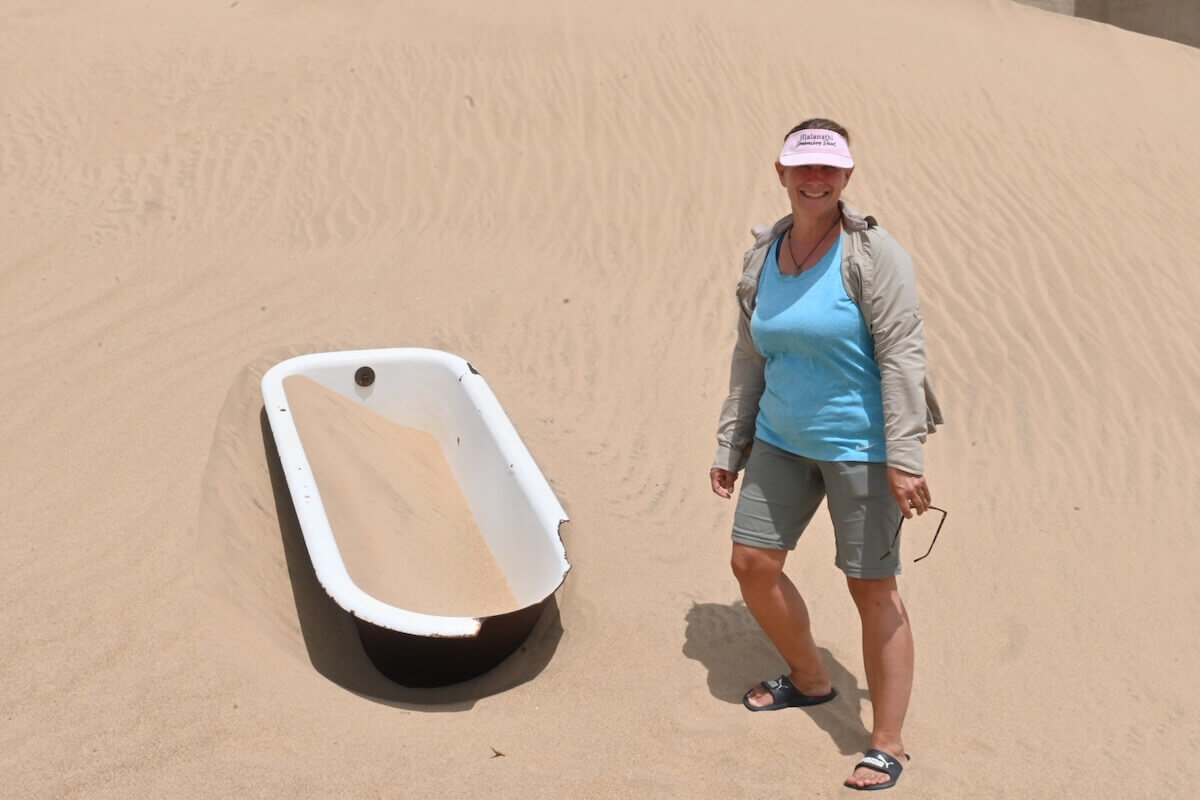The old German colonial ghost town of Kolmannskuppe. It’s eerie the way sand is slowly swallowing everything.




Sand and dust. Namibia’s roads go on forever. As we drove, we didn’t see other cars for what seemed like forever, and when we did, we stayed far back because the dust kicked up from tires would hang in the air, making it hard to see anything ahead. When the rain finally came, it was dramatic. The flooding was fast. We were in Khorixas camping below the Mowani Lodge when this thunderstorm rolled through. The dry riverbed we crossed the day before was a flowing river when we tried to cross the next day. We had to make a detour that was nail biting at times; it put us behind by a day. The roads all dipped through dry riverbeds, which often weren’t dry anymore. In some places, the mud and water on the backroads was treacherous. We slowly made our way to Uis. I was too stressed to take pictures.








Old things. Some Welwitschia plants are estimated to be 1000-1500 years old. It is native to southern Angola and Namibia. The petrified forest around Khorixas was formed by ancient enormous trees washed down from Angola by massive floods. The 80-million-year old solidified lava flow of Burnt Mountain and the geologic Organ Pipes that are 150 million years old. Twyfelfontein’s ancient Stone Age petroglyphs are 4000-6000 years old. Twyfelfontein was Namibia’s first UNESCO site. The Lion Man depiction is probably the best known image.








Our campsites among the rocks with sandstone tabletop mountains in the background.











Etosha National Park. Our campsite at the fence. Night and day at the watering holes, and the sociable weaver nests that can weigh hundreds of pounds and topple trees and power poles.










Swakopmund, Windhoek, Helmeringhausen, Solitaire, and Adventures….













Landscapes












